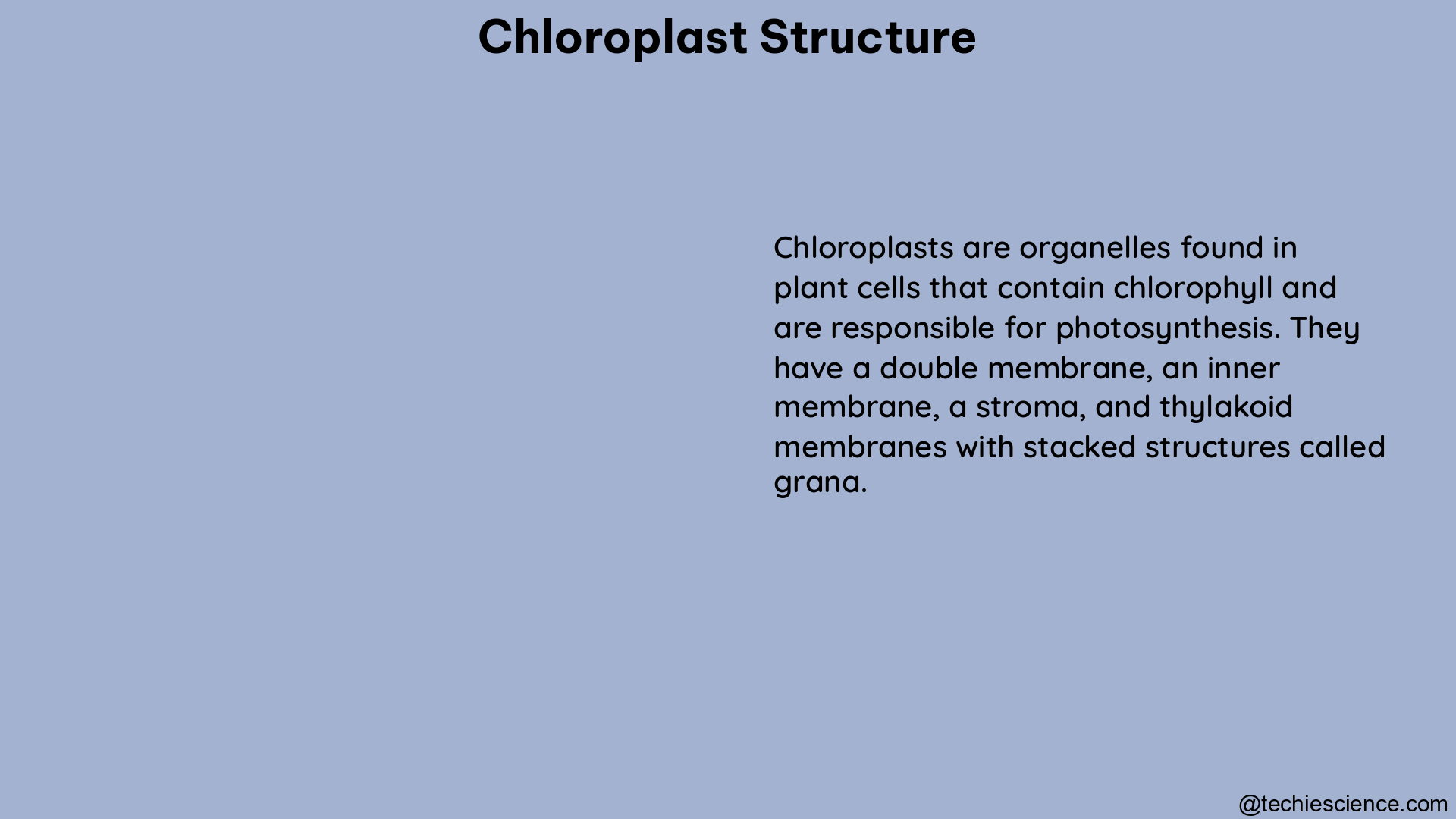The chloroplast is a remarkable organelle found in the cells of plants and some algae, responsible for the process of photosynthesis. This complex structure is composed of an outer envelope membrane, an inner envelope membrane, stroma, thylakoid membranes, and grana, each playing a crucial role in the plant’s ability to convert light energy into chemical energy.
The Chloroplast Envelope: Protecting the Photosynthetic Machinery
The chloroplast is encased in a double-membrane envelope, known as the outer and inner envelope membranes. These membranes serve as a protective barrier, regulating the movement of molecules in and out of the organelle. The outer membrane is permeable to small molecules, allowing the exchange of nutrients and metabolites, while the inner membrane is more selective, controlling the entry and exit of specific compounds.
The Stroma: The Chloroplast’s Metabolic Hub

The stroma is the fluid-filled space between the inner envelope membrane and the thylakoid membranes. This region is the site of the Calvin cycle, where carbon dioxide is converted into organic compounds through a series of enzymatic reactions. The stroma also contains ribosomes, DNA, and various enzymes necessary for the synthesis of proteins, lipids, and other biomolecules.
The Thylakoid Membranes: The Photosynthetic Powerhouse
The thylakoid membranes are the heart of the chloroplast, housing the photosynthetic machinery responsible for the light-dependent reactions of photosynthesis. These membranes are composed of appressed (grana) and non-appressed (stroma lamellae) regions, each with distinct functions and structures.
Grana: The Stacked Discs
The grana are stacked, disc-like structures within the thylakoid membranes, containing the photosynthetic pigments and proteins necessary for the light-dependent reactions. These stacks of thylakoid membranes provide a large surface area for the efficient capture and conversion of light energy.
Stroma Lamellae: The Connecting Membranes
The stroma lamellae are the unstacked, interconnected regions of the thylakoid membranes that link the grana together. These membranes facilitate the movement of electrons and protons between the grana, ensuring the smooth flow of the light-dependent reactions.
Chloroplast Morphometrics: Quantifying the Structural Changes
During chloroplast development and biogenesis, the thylakoid membrane system undergoes significant structural changes. The thylakoid surface area (stroma side) can reach up to 2086 (±393) µm^2 per chloroplast at the mature stage, indicating a dramatic expansion of the photosynthetic machinery. Additionally, the ratio of the thylakoid to envelope surface area increases drastically, reflecting the growing importance of the thylakoid membranes in the overall chloroplast structure.
Lipid Composition: The Backbone of Thylakoid Membranes
The thylakoid membranes are composed of various types of lipids, including galactolipids, sulfoquinovosyldiacylglycerol, and phospholipids. Galactolipids are the most abundant, accounting for up to 80% of the total lipid content. These lipids play a crucial role in the structural and functional integrity of the photosynthetic apparatus.
Chloroplast Proteome: A Dynamic Landscape
The chloroplast proteome, the collection of proteins within the organelle, is highly dynamic and undergoes significant changes during chloroplast development and biogenesis. Proteomics techniques, such as the detection and quantification of representative peptides, have provided valuable insights into the abundance and distribution of chloroplast-localized proteins. The consistency of the proteomics data across different studies underscores the reliability of this approach.
Regulatory Factors: Maintaining Chloroplast Structure and Function
The structure and function of the chloroplast are regulated by various factors, including magnesium ions, xanthophylls, and lipids. Magnesium ions are essential for the stability and proper functioning of the photosynthetic apparatus, while xanthophylls play a crucial role in photoprotection and energy regulation. Lipids, particularly cardiolipin, are involved in the structural and functional organization of the photosystem II complexes.
In conclusion, the chloroplast is a highly complex and dynamic organelle, with a well-organized structure that is essential for its role in photosynthesis. From the outer envelope membranes to the intricate thylakoid system, each component of the chloroplast contributes to the efficient capture and conversion of light energy into chemical energy. The ongoing research on chloroplast structure and function continues to provide valuable insights into the mechanisms that sustain plant life and the broader ecosystem.
References:
– A multifaceted analysis reveals two distinct phases of chloroplast biogenesis: an initial photosynthesis-enabling ‘Structure Establishment Phase’ followed by a ‘Chloroplast Maturation Phase’
– 3-D modelling of chloroplast structure under (Mg2+) magnesium ion treatment
– Relationship between thylakoid membrane arrangement and stacking
– Chloroplast Pigments: Structure, Function, Assembly

The lambdageeks.com Core SME Team is a group of experienced subject matter experts from diverse scientific and technical fields including Physics, Chemistry, Technology,Electronics & Electrical Engineering, Automotive, Mechanical Engineering. Our team collaborates to create high-quality, well-researched articles on a wide range of science and technology topics for the lambdageeks.com website.
All Our Senior SME are having more than 7 Years of experience in the respective fields . They are either Working Industry Professionals or assocaited With different Universities. Refer Our Authors Page to get to know About our Core SMEs.